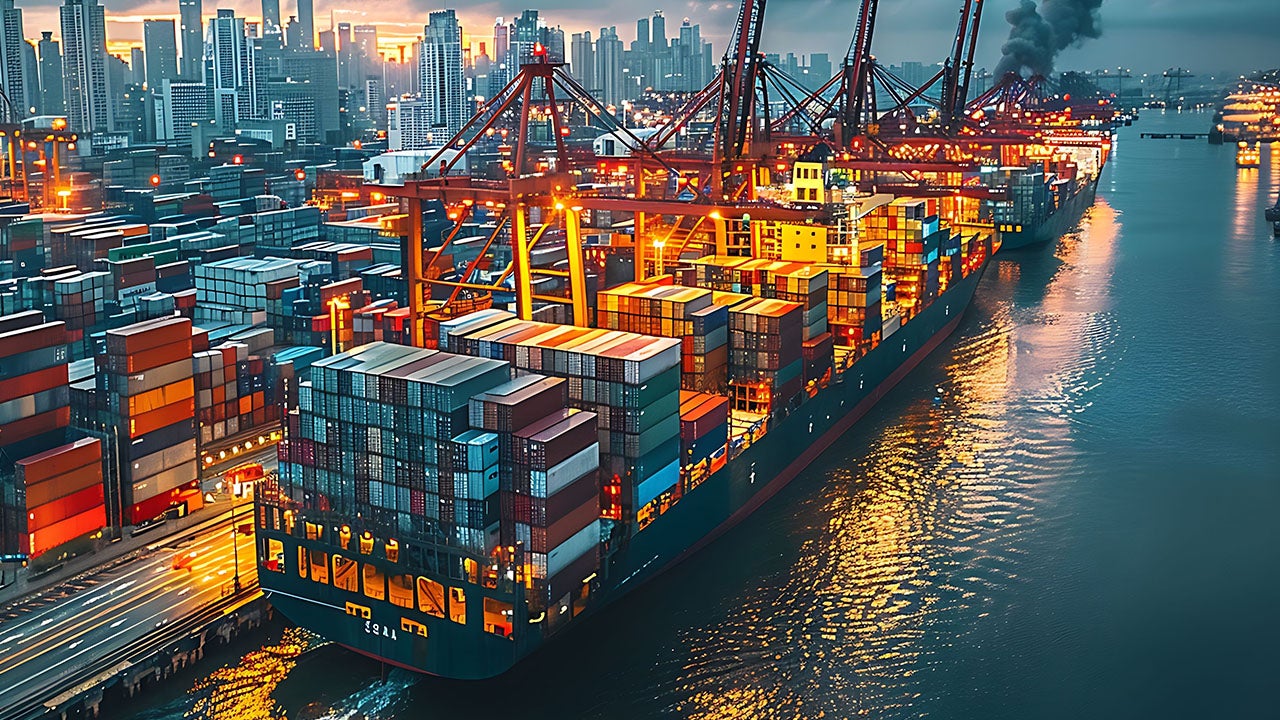Implications of the “Liberation Day” tariff announcement

What happened?
US President Trump announced tariffs to be applied on imports from a variety of countries. These tariffs were worse than most had expected.
In brief, there will be an across-the-board 10% tariff on imports with additional ‘retaliatory’ tariffs specific to individual countries depending on the Trump Administration’s special calculation of the duties they have applied on US goods, factoring in the size of the trade deficit with each country:
- China charges the US 67%; the US will charge China 34%
- Taiwan charges the US 64%; the US will charge Taiwan 32%
- Japan charges the US 46%, the US will charge Japan 24%
- Cambodia charges the 97%; the US will charge Cambodia 49%
- The UK charges the US 10%, the US will charge the UK 10%
- South Africa charges us 60%, the US will charge South Africa 30%
- Brazil charges the US 10%, the US will charge Brazil 10%
In terms of products, the Section 2321 25% product-specific tariffs for aluminum, steel and auto imports will not have reciprocal tariffs applied on top of the 25% tariffs.2 That exemption also applies to pharmaceuticals, semiconductors and lumber – which could be subject to 25% tariffs in the future following Section 232 investigations.
In terms of countries, the largest tariffs have been applied to China, Vietnam, Taiwan and Indonesia. The onerous tariffs applied to small Asian economies such as Vietnam may prevent China and other countries from using those small economies to circumvent the tariffs applied to themselves. India will have a 26% tariff applied to its goods, the European Union (EU) will have a 20% tariff applied to its goods, and Japan will have a 24% tariff applied to its goods. Canada and Mexico received far lower tariffs.
Most notably, the US' effective tariff rate on China increased to ~54%, if factoring in existing tariffs, with today’s announcement. This is an extremely high level that we believe will cause large price increases for American consumers. It is estimated that about 60% of goods sold at Wal Mart are imported from China.3 It was also announced that the tariff exemption for packages under $800 in value from China and Hong Kong (benefiting online retailers such as Temu and Shein) will end on May 2.
How have markets reacted?
US stocks have been hit hard. The decline was aggravated (and broadened to other markets) by the announcement that China will impose a 34% tariff on US goods from April 10.
The 10-year yield US Treasury yield fell, largely due to a fall in the real component (as measured by the yield on Treasury Inflation Protected Securities). The bond market seems to be reacting more to concerns about falling growth than to concerns about a resurgence in inflation (for the moment).
The US dollar weakened, which we think reflects a market judgment that the US economy is threatened more than others by this action.
What is our outlook on the situation?
The tariffs on China are so high, at 54% (and for some products, as high as 67%), as to be almost restrictive for US-China trade. This suggests it is unlikely they will be long-term in nature, although we could see an escalation of tariff wars in the short term. Keep in mind that it has been reported that China, South Korea and Japan will have a coordinated retaliatory response to the US tariffs.
These tariffs place a high burden on US consumers and businesses, which are likely to be hit hardest. While we expect prices to rise in the near term, aggregate demand is likely to fall as consumers reduce spending in response to the tariffs. We also anticipate a negative impact to those countries with higher tariffs such as China and Vietnam.
This certainly increases the risk of recession for every day that these high tariffs are in force. We anticipate significant volatility and downward pressure on risk assets in the near term. The risk of "stagflation" (high inflation and unemployment with stagnant growth) has also increased. And a resurgence in inflation may prevent the Federal Reserve from acting quickly to cut rates in order to support the economy.
We also must recognize that earnings uncertainty increases for each day that these high tariffs are in force.
The good news is that there are staggered implementation dates, which supports the theory that these tariffs are being used as a bargaining tool and are not expected to be long term in nature. And some countries have indicated they will reduce the tariffs they apply to US imports.
We are likely to see a mix of responses from retaliation to renegotiation, with the US surplus in services also targeted. We should also expect strong fiscal responses from some countries to try to offset the damage to exports and investment. China and the EU seem likely to continue to take these steps, which should help cushion the immediate blow in case these tariffs are fully implemented. In the longer term, both China and the EU will probably respond with higher consumption or investment, which would in our view be positive for global and regional growth, making these economies less subject to US cycles.
What is our resulting investment view?
In the short term, there will likely be significant downward pressure on US stocks and stocks of countries with high tariffs. We expect the US dollar to weaken as US growth slows and in anticipation of aggressive Fed easing. We anticipate gold will continue to rise on geopolitical and economic policy uncertainty, but note that it has fallen since the announcement, perhaps suggesting that a lot of this news was already in the price.
We think European equities and Chinese equities could perform well, assuming fiscal stimulus will help support economic growth.
For longer-term investing, we look to take advantage of sell-offs to increase exposure to risk assets, taking cash off the sidelines. Investors with long time horizons should remain well diversified.
This is of course an evolving situation, so we will try to provide updates regularly.
What are the risks to that view?
The risk is that the tariffs remain in place for a lengthier period of time and are met with additional tariffs from other countries, which remain in place, creating a global recession.
Another risk is that continued uncertainty about rapidly changing tariff policy results in a chilling effect on business investment and hiring in the US, which could also help lead to a recession.
Investment risks
All investing involves risk, including the risk of loss. In general, stock values fluctuate, sometimes widely, in response to activities specific to the company as well as general market, economic and political conditions.
This does not constitute a recommendation of any investment strategy or product for a particular investor. Investors should consult a financial professional before making any investment decisions.
A risk asset is generally described as any financial security or instrument that carries risk and is likely to fluctuate in price.
Risk-off refers to price behavior driven by changes in investor risk tolerance; investors tend toward lower risk investments when they perceive risk as high.
Stagflation is an economic condition marked by a combination of slow economic growth and rising prices.
A trade deficit is an economic measure of international trade in which a country's imports exceed its exports. Therefore, a trade deficit represents an outflow of domestic currency to foreign markets.
Fluctuations in the price of gold and precious metals may affect the profitability of companies in the gold and precious metals sector. Changes in the political or economic conditions of countries where companies in the gold and precious metals sector are located may have a direct effect on the price of gold and precious metals.
Investments in companies located or operating in Greater China are subject to the following risks: nationalization, expropriation, or confiscation of property, difficulty in obtaining and/or enforcing judgments, alteration or discontinuation of economic reforms, military conflicts, and China’s dependency on the economies of other Asian countries, many of which are developing countries.
The opinions referenced above are those of the author as of April 3, 2025. These comments should not be construed as recommendations, but as an illustration of broader themes. Forward-looking statements are not guarantees of future results. They involve risks, uncertainties and assumptions; there can be no assurance that actual results will not differ materially from expectations.
Footnotes
-
1
Section 232 of the Trade Expansion Act of 1962 (19 U.S.C. §1862) authorizes the Secretary of Commerce to conduct comprehensive investigations to determine the effects of imports of any article on the national security of the United States.
-
2
Fact Sheet: President Donald J. Trump Declares National Emergency to Increase our Competitive Edge, Protect our Sovereignty, and Strengthen our National and Economic Security – The White House
-
3
Walmart Shifts to India, Cuts China Imports, https://www.reuters.com/business/retail-consumer/walmart-shifts-india-china-cheaper-imports-2023-11-29/






